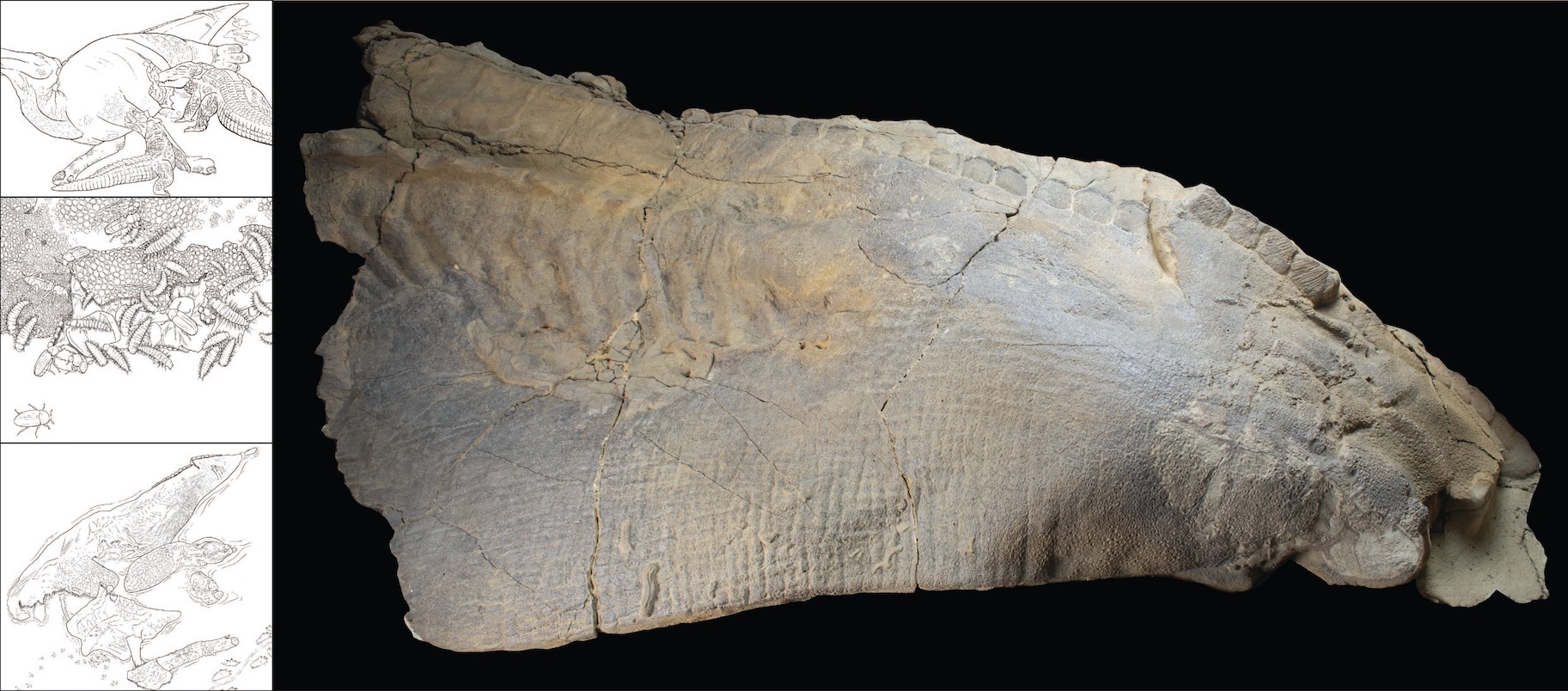Create a free profile to get unlimited access to exclusive videos, sweepstakes, and more!
Mummified dinosaurs might be more common than we thought
If they're cursed, we're in trouble.

In The Lost World (now streaming on Peacock!), Steven Spielberg’s blockbuster follow up to Jurassic Park, Dr. Ian Malcom along with a cast of new characters find themselves on Isla Sorna surrounded by dinosaurs. We learn that that’s where the dinosaurs for the park were created, before being transported to Isla Nublar. In the years since the disaster at the park, the dinosaurs have been allowed to thrive largely because nobody knew they were there. An entire ecosystem of prehistoric animals had taken over the island, without anyone the wiser, because we simply didn’t know to look for them.
There’s something similar happening in the world of paleontology today. So called mummified dinosaurs — well-preserved specimens which retain surface features like skin or nails — are exceedingly rare, but they might not be quite as rare as we previously supposed, according to a recent paper published in the journal PLOS One.
There has been some disagreement among scientists about the precise conditions needed for soft tissue like skin to be preserved, and a fossilized Edmontosaurus named Dakota is shaking up the debate. SYFY WIRE spoke with Stephanie Drumheller from the Department of Earth and Planetary Sciences at the University of Tennessee and Clint Boyd from the Fossil Resource Management Program at the North Dakota Geological Survey about what they found.
RELATED: Dinosaurs may have been on their way out well before the asteroid hit
“One of the previous assumptions was that you needed rapid burial. Part of that is to just get the remains and stash them underground so that predators and scavengers can’t come and eat them. Also, the idea was that burying it would slow down decomposition and you could get soft tissue. Baked into that if a predator did manage to start eating remains, that was the kiss of death for fossilization,” Drumheller said.
That’s what makes Dakota so fascinating. The specimen seemingly defies all of the expectations we typically have about mummified dinosaurs. And it almost wasn’t discovered at all. The fossil was first uncovered almost 25 years ago, in 1999, by a high school student on his uncle’s property. That initial find revealed a couple of tail bones sticking out from a hill. The spot was catalogued but not excavated. A few years later, paleontologists returned to the site. By that time more of the hill had eroded, exposing more of the fossil, including a piece of skin. The fossil was collected and eventually made its way to the North Dakota Geological Survey in 2008, where it has been ever since.
The co-authors on the paper, Becky Barnes and Mindy Householder, worked to prepare the fossil for several years before funding ran out. Dakota was then put on display until 2017 when researchers received a private donation toward continued preparation work and a new exhibit. What researchers found during the course of continued preparation raised Dakota from rare to extraordinary.
As they continued to chip away at the rock surrounding Dakota, researchers found clear bite marks in the skin and on the bone. According to what we believed about the conditions for mummification, that shouldn’t have happened. Unless, of course, we were wrong about what it takes to preserve soft tissue. In fact, it’s the predation itself which might have made preservation possible.
“Once you have poked holes in the body wall, then when decomposition takes over all of the fluids and gases related to that have an escape route. It’s able to leave the body and leave behind the skeleton and an empty envelop of skin, and nothing else. You end up with this deflated appearance. That was backed up by the CT scan data. The bones are all in there, and it’s covered over with skin, but we don’t see anything else,” Drumheller said.
Because of our preconceived notions that soft tissue preservation required rapid burial, an arid climate for quick drying, or both constrained the ways and the places in which we looked for soft tissue. Dakota challenges those expectations by providing an alternative route. The very act of scavenging a dinosaur removes excess moisture and speeds the drying process. It’s almost as if small predators and decomposers did the prep work necessary for mummification to occur without even knowing it. If the findings for Dakota hold true at other sites and for other specimens, it could mean there is a lot more dinosaur skin out there for us to find.
“We have historical examples where skin had been found with dinosaurs and it was destroyed either because people weren’t interested in it at the time or because they didn’t realize what they had… we strongly suspect there’s a lot more skin out there than we have been identifying,” Drumheller said.
The authors hope that other paleontologists will keep a keener eye for skin and other soft tissues in previously unexpected places. Like the dinosaurs of Isla Sorna, mummified skin is easy to miss if you don’t even know you’re supposed to be looking for it.


























